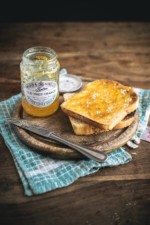Nutrition is always an interesting subject to talk about with the older generation for many reasons.
Our nutrition knowledge has come on in leaps and bounds in the last 20- 30 years. When I was a child we didn’t know as much about nutrition as we do now and maybe with all the controversy and eating problems that arise from scrutinising our every mouthful that was no bad thing.
However, we do know so much more now and we can and should use this to our advantage.
Nutrition in the older generation doesn’t get talked about as much on social media – perhaps because they’re not as vocal as others are. Nevertheless as our longevity improves, nutrition will continue to play a vital role in our healthy aging and it pays to get it right.
Food availability and dietary traditions were different ‘in the olden days’. When you first give solid food to your baby there’s often a relative in the wings marvelling at the variety of foods around these days, baulking at all the equipment we have access to or itching to impart their own special remedy to settle your little one in seconds (apparently).
When we talk about the older generation those aged 60 and over can find the whole thing rather patronising – I have just spent the first half of the Easter holidays with a group of 60 somethings who have far more stamina than me that’s for sure. But as the decades roll on, the composition of our body undeniably changes and with it comes different nutritional needs. Today I wanted to put the spotlight on protein and flag to Grandma that ‘just having a bit of toast’ at any meal of the day might not be a good idea…
Protein requirements increase as we get older due to age related sarcopenia. Basically this means our muscle mass declines with age which reduces strength, function and flexibility and increases risk of falls and fractures and loss of physical function generally. To combat this loss, Grandma needs to include adequate protein in the diet and if she can keep as active as possible this will increase the preservation of muscle mass further.
To eat enough protein in a way which is of most use to the body it should be included at every meal and as I’ve yet to find a protein fortified marmalade, breakfast definitely has a gaping hole. It’s not just breakfast though – tomato soups, apple on toast, even marmite won’t support these higher protein needs.
Good options at breakfast would be eggs in any form, Greek yoghurts which are traditionally higher in protein, milky drinks as well as the usual meat, fishes and pulses at other meals.
Snacks also provide a valuable opportunity to top up on intakes – peanut butter, cheese, nuts and seeds. Sometimes it’s simple swaps that can make all the difference. Seeded bread will have slightly more protein for example, and mixed nuts would provide a useful afternoon snack. Pulses and lentils should be used in soups and skimmed milk powder can be used to give a protein boost to a wide variety of foods and drinks include milk itself.
It’s also important to keep going with the sunshine vitamin. We are coming into the season where our bodies can begin to make enough vitamin D through the action of the sun’s rays on our skin and the general population no longer needs a supplement but this is not the case for older people. 10 micrograms per day as a supplement should continue for those over 65 as their skin isn’t as efficient at converting it, and daily routines may mean less time outdoors. Vitamin D preserves muscle strength and functional ability especially in older people so is a really important part of the puzzle.
Vitamin D don’t necessarily need to be accompanied with calcium though if the diet contains good sources and they haven’t been identified as in need of additional calcium for bone density reasons.
Please help spread the word to all the Grandma’s and Granddad’s out there!
P.s. My recent appearance on Holding Back the Years got me thinking about nutrition and the older generation. here’s my behind the scenes chat with good old Ainsley!


Leave A Comment